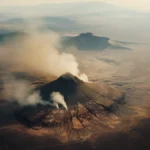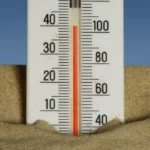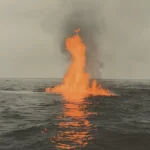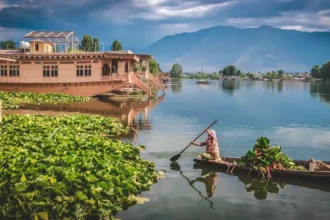Imagine if three-quarters of all the ice in the world’s highest mountains simply disappeared by the time today’s children reach old age. This shocking reality could become true according to a major scientific study published in the Science journal, as reported by HindustanTimes.
Scientists have discovered that the Hindu Kush Himalaya region faces catastrophic glacier loss that threatens water security for over 2 billion people across Asia.
Understanding the Hindu Kush Himalaya: Asia’s Disappearing Water Tower
The Hindu Kush Himalaya region stretches across eight countries and contains the world’s largest concentration of ice outside the polar regions. Think of these glaciers as massive frozen reservoirs that have stored water for thousands of years. Dr. Harry Zekollari, who co-led this groundbreaking research, explains that these ice giants feed major rivers like the Ganges, Indus, and Brahmaputra.
When global temperatures rise just 2°C above pre-industrial levels – meaning compared to temperatures before factories began pumping out greenhouse gases in the 1800s – these natural water towers could lose up to 75% of their ice by 2100. This means only 10-15% of current glacier levels would remain.
Why Half a Degree Makes All the Difference
You might wonder why scientists get so concerned about what seems like a small temperature difference. Here’s why that half-degree matters enormously:
- At 1.5°C warming: Scientists can preserve 40-45% of Himalayan glacier ice, giving billions of people continued access to reliable water sources
- At 2°C warming: Nearly all ice disappears, leaving communities with drastically reduced water supplies and forcing millions to find new water sources
- Current trajectory: We’re heading toward 2.7°C warming by century’s end, which would create even more devastating consequences
The Water Crisis Unfolding
The connection between disappearing glaciers and your daily water supply works like a complex chain reaction. UNICEF South Asia and other organizations have documented how this crisis unfolds:
| Initial Phase: Melting glaciers increase river flows, causing floods that damage water infrastructure | Long-term Impact: Shrinking glaciers reduce river water, especially during dry seasons when people need water most |
| Agricultural Effects: Farmers lose irrigation water, threatening food production for millions of families | Health Consequences: Reduced water availability increases waterborne diseases as people use contaminated sources |
How Fast Are We Losing Ice?
The speed of glacier loss has dramatically increased in recent years. According to Current Affairs and ICIMOD data, glaciers in the Hindu Kush Himalaya lost volume 65% faster during 2011-2020 compared to the previous decade. This acceleration means that what scientists expected to happen gradually is now occurring much more rapidly, giving communities less time to adapt their water management systems.
Beyond Water: The Ripple Effects
Glacier loss creates multiple problems that extend far beyond water shortages. The melting ice contributes to rising sea levels that threaten coastal cities worldwide. Mountain ecosystems lose their natural balance as water patterns change. Tourism industries that depend on snow-capped peaks face economic hardship.
Even the tiny organisms living in these cold environments – called microbiomes – face extinction, which disrupts entire food chains.
Dr. Zekollari’s research makes one thing crystal clear: the choices we make today about reducing greenhouse gas emissions will determine whether billions of people have reliable water access in the future. The question now is whether world leaders will act quickly enough to prevent this crisis from becoming reality.











